Whether meant for better digestion or making cocktails, bitters have numerous health benefits. Learn more about what are bitters and how to make them yourself.
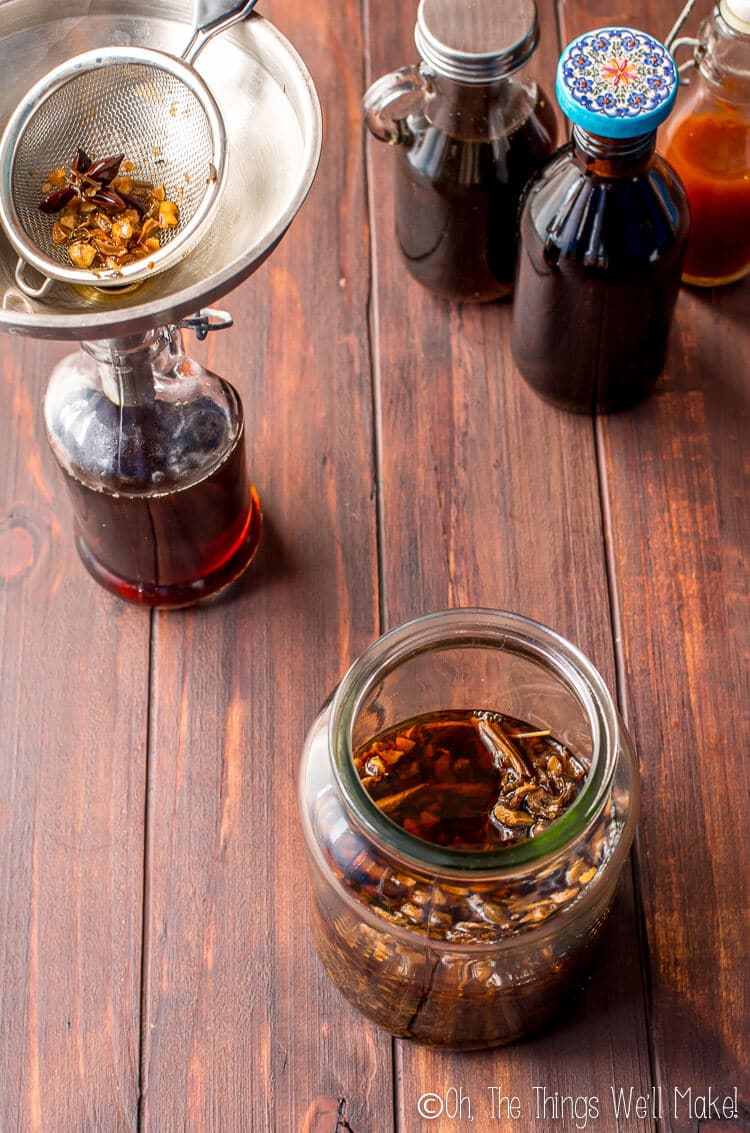

There are different types of bitters.
You may have seen bitters for sale in the alcohol aisle of your local supermarket. Those bitters are meant for adding to cocktails to balance out the flavor of what would otherwise be a too-sweet cocktail. But, you may have also seen digestive bitters for sale in your local health store.
Bitters are used both to help soothe stomachaches and to add some flavoring to some of your favorite cocktails! When mixing them with your favorite drink, or even in food dishes, they add a whole new layer of depth and flavor to your drink or dish.
Generally, bitters are sold in small bottles. Because they have such intense flavor, they usually come with a dropper for a single drop or small doses to use as you will!
I began making them as a last stitch effort to get rid of pinworms naturally. A friend of mine had been searching for them here in Spain to help soothe her daughter’s tummy, and seeing as they aren’t readily available here, I started researching how to make my own.
Now that I have a couple of batches made, I thought it would be fun to share some information about bitters with you, so you can decide if you want to use them in your cooking adventures, mastering cocktails, or soothing a bellyache.
What are bitters?
Bitters are basically tinctures made from a variety of bitter and not-so-bitter plants. A strong alcohol is infused with spices, roots, tree bark, seeds, fruit, etc. to create a potently flavored liquid.
Bitters were originally created and put on the market for medicinal purposes. Back in the old days, they claimed that bitters would cure malaria, restore your youth and more. While some of those may have been outlandish health claims, there is some truth to the notion that bitters can help restore your health. This is because bitter flavors can stimulate your digestion, which could help improve many related problems, from gases and stomach aches to reducing sugar cravings, and maybe even balancing your appetite or helping with nausea.
Where can you buy bitters?
Certain bitters can likely be found in the cocktail aisle of your local supermarket. That’s because aromatic bitters like the Angostura bitters, incidentally developed in Venezuela to help cure parasites and other ailments, are used in cocktails like the Manhattan. Orange type bitters are normally used in the Old Fashioned and other Bourbon cocktails.
If you take a look online or in specialty wine shops, you’ll probably find an even greater variety of bitters! You can find sweet, sour, herbal bitters and more. They even have coffee and dark chocolate flavored bitters.
Health food stores also tend to carry bitters to help aid digestion.
Health Benefits of Bitters
DISCLAIMER: This post is meant to be informative only. It is not meant to diagnose or treat any medical condition. You should either avoid or be extremely cautious with bitters (talk to your doctor before using) if you are pregnant or have kidney stones, stomach ulcers, gallbladder disease, GERD, gastritis, or any other digestive condition.
Bitters, like I said above, were used for health benefits.
Because the modern diet is mostly made of sweet and salty type foods, we don’t eat as many bitter foods anymore. In fact, a lot of normally bitter foods may have been modified over the years to reduce their bitterness.
Eating bitter foods regularly, like dandelion leaf or arugula, has been shown to help improve and sooth gas, bloating, occasional heartburn, calm your upset stomach, balance your appetite, curb sugar cravings, regulate bowel movements, support live and healthy skin, and more. Bitter foods can help stimulate your liver and gallbladder, which improves digestion; this, in turn, eases your tummy and can help make you feel better in general.
Because it is hard to incorporate a variety of bitter foods into your diet, using digestive bitters can help fill that void in your diet.
The first bitters made were meant as an all natural remedy to cure sickness and rid the body of parasites. Using them is a great way to incorporate a tradition of healing for the body.
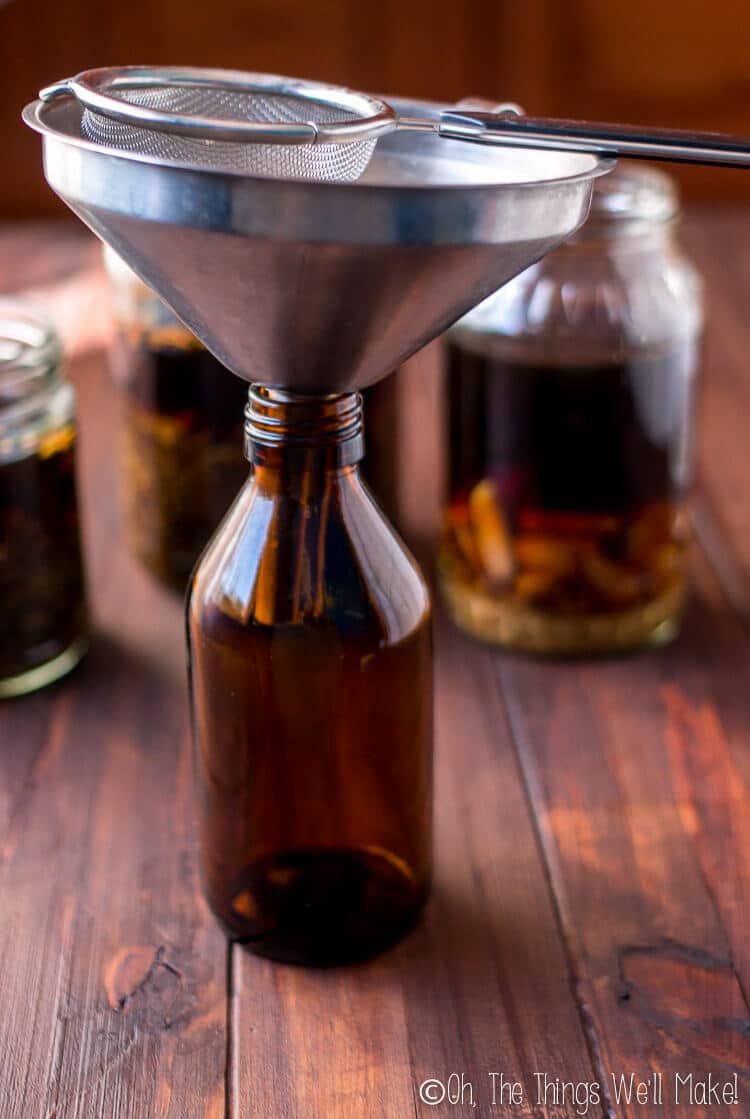
The first bitters made were meant as an all natural remedy to cure sickness and rid the body of parasites. Using them is a great way to incorporate a tradition of healing for the body.
Bitters for ridding the body of parasites
Certain bitter botanicals are often used as aids to rid the body of unwanted parasites.
One of the most famous anti-parasitic combinations is that of wormwood, black walnut husks, and cloves.
When I first decided to make my own bitters, I was dealing with trying to rid myself of pinworms naturally without having to take the normally prescribed antibiotics. I’ll have to write about my experience some other day, but I will say that I had unsuccessfully tried everything from diatomaceous earth to apple cider vinegar, and out of desperation took the first dose of prescription medicine, only to find that it gave me severe digestive issues. Not wanting to try again for the next 2 doses, I looked into more natural solutions.
The doctor at the ER had suggested a natural parasite cleanse for non-diagnosed members of the family, and we went to buy a small bottle of anti-parasitic tincture. Everybody in the family ended up using it just in case.
The tincture we bought used a combination of wormwood, cloves, black walnut, garlic, thyme, ginger, orange peel, and several other botanicals. It was ridiculously expensive for such a tiny bottle, and I decided that I wanted to look into making my own for any future outbreaks.
Bitters for Cocktails
Several well-known classic cocktail recipes use bitters as an ingredient. They help create a balance within the cocktail, balancing out what might otherwise be a too-sweet cocktail and providing unique flavors.
You can find so different flavors of bitters to meet any flavor needs for your drinks. Angostura bitters are great to have on hand for cocktails such as the Manhattan. Citrus bitters like orange or grapefruit tend to be slightly sweeter and more herbal in flavor. They are commonly used in Bourbon cocktails and in the Old Fashioned. Other interesting bitters flavors include coffee, chocolate, and lavender.
Bitter liqueurs: Bitter aperitifs and digestifs
While bitters are normally taken before eating, digestifs are alcoholic drinks that are served after a meal to help aid digestion.
Bitter liqueurs can be served as either as aperitifs or digestifs. Aperitifs are before-dinner-drinks that help stimulate the appetite.
Some liqueurs, like Campari, can be served both as an aperitif or as a digestif, especially when mixed into cocktails like the Negroni.
Here in Spain, it isn’t uncommon to be brought a “chupito,” or a shot of liqueur, as a thank you gift when you pay your restaurant bill. One of the common liqueurs served is “orujo de hierbas,” an herbal liqueur made by infusing a variety of carminative herbs meant to serve as a digestif.
Jägermeister is another common digestif that has gained popularity in the US.
Cooking With Bitters
Some people love to cook with bitters; it is a great way to infuse bitter flavors into your foods. They can be added to main courses, side dishes, or even pies or ice cream!
Adding a citrus flavor of bitters to a creamy sauce for topping your vegetables is a great way to lighten up the dish. Just keep in mind that a little goes a long way!
How long do bitters keep?
Because bitters are infused into a strong alcohol, they naturally preserve themselves pretty well.
I haven’t known bitters to go bad over an extended period of time. They generally say that you can keep bitters for around 5 years before buying new bitters, but in reality, they probably keep much longer than that. To keep your bitters lasting longest, store them in a cool, dark place, out of direct sunlight.
Common herbs and spices used in Bitters
While I’m providing some recipes as a guideline, you can really easily make your own combination to suit your needs and taste. There are many herbs that are commonly used in bitters
The most bitter:
These are the most bitter of the various herbs and spices and are meant to help stimulate the liver and gallbladder to help digestion. Because they are so bitter, they are best combined with citrus peels and some of the other more aromatic herbs and spices, to help make a more palatable tincture.
- Gentian – used to promote appetite and stimulate digestion, may help physical and mental exhaustion
- Wormwood – very bitter, antiparasitic, be careful about using it too often over an extended period
- Artichoke leaf – mild bitter
- Angelica root – bitter and aromatic – great for digestion, flatulence, and calming anxiety
- Dandelion root & leaf – mild bitter
- Burdock root – a “blood purifier” that stimulates the liver
- Yellow dock – stimulates bile production, laxative, and also used to supplement iron
- Motherwort – extremely bitter, good for digestion and anxiety
- Other bitters: Angelica root, calamus root, quassia bark, yarrow, chichona bark, cascarilla, and quinine
Herbals often used, especially for digestifs:
Here in Spain, these herbs are often added to strong liquors like orujo (a strong pomace brandy) to make liqueurs that are served after dinner to aid in digestion. It’s very common to see a bright yellow drink served in a shot glass, “orujo de hierbas,” that is made by adding several of the following herbs to orujo for as long as desired before filtering them out.
- Rosemary – great for stomach problems, as an appetite stimulant, for stomach cramps, bloating and constipation
- Thyme – carminative, may help dislodge the mucus coating of the intestinal tract, can help relieve intestinal cramping.
- Fennel – carminative and soothing, often used for IBS and colic in babies, may help with heartburn, bloating, loss of appetite
- Oregano – rich in volatile terpenes, it stimulates digestion and has gastric enhancing properties, helping digest even heavy foods
- Coriander – soothes an upset stomach, helps with indigestion and intestinal gas, may also stimulate appetite
- Chamomile – may help colic, gas, diarrhea, stomach cramps, indigestion and IBS symptoms
- Mint – may help prevent spasms and pain in the digestive tract, excess acid in the stomach, bloating
- Lemon verbena – anti-spasmodic, may also help with gas, indigestion, constipation, and diarrhea
- Other herbs and spices common in digestifs: caraway, savory, cumin, etc.
Spices and aromatics, especially in citrus bitters:
These aromatics make for fun and generally pleasant tasting tinctures. Mixtures of these are generally combined with at least one of the more bitter herbs above to make a more medicinal bitter.
- Cinnamon
- Star anise
- Allspice
- Cloves
- Ginger
- Cardamon pods
- Citrus peels
- Coffee beans
- Cocoa nibs
- Licorice root

Formulating your own bitters recipe
Bitters recipes don’t have to be complicated. First of all, you should decide the purpose of your bitters. Are you looking to make bitters for cocktails or some medicinal purpose, or are you just looking to make a digestive liqueur to soothe your stomach after dinner?
Once you’ve decided the purpose of your bitters, you can choose the herbs, spices and other botanicals that you want to use. Start simple and choose just a few of the above-mentioned herbs and spices.
For a more herbal type bitter, You could choose one or two of the more bitter herbs and combine them with a few of the more aromatic herbs. For a citrus type bitter, you could add some of the spices like cloves and star anise to citrus peels and one of the more bitter herbs.
A great way to begin making bitters is to make separate tinctures of each herb or aromatics that you want to use. That makes it very easy to combine them for the desired flavor, as you can adjust the quantities as you go along. To do so, find some small glass jars and place a small amount of each herb or spice into each jar. Cover completely with a high proof alcohol and allow the flavor to infuse into the alcohol for several weeks. After several weeks, strain out the herbs and spices, and work to combine the various tinctures
On the other hand, you can also mix together some of the various herbs and spices before covering the mixture with alcohol. while it’s simpler to make the bitters this way, it isn’t as easy to adjust the final flavor once you’ve finished making the bitters.
Non Alcoholic bitters
While bitters are usually used as a tincture meaning the herbs are infused into alcohol, if you must avoid alcohol, you can still benefit from bitter herbs. Rather than make a tincture with bitters, you can make yourself a strong tea and sip on it twice a day. This is especially effective if done before meals. You should only make enough tea for what you will be drinking within 3 days, and store the unused tea in the fridge.
How to use Bitters to aid digestion or help against cravings
Around 20-30 minutes before your meal, add a few drops of the bitters solution directly to your tongue. You can also add a few drops to your tongue when you are experiencing cravings for certain unhealthy foods to help calm those cravings.

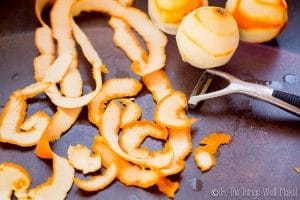
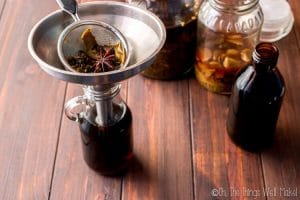
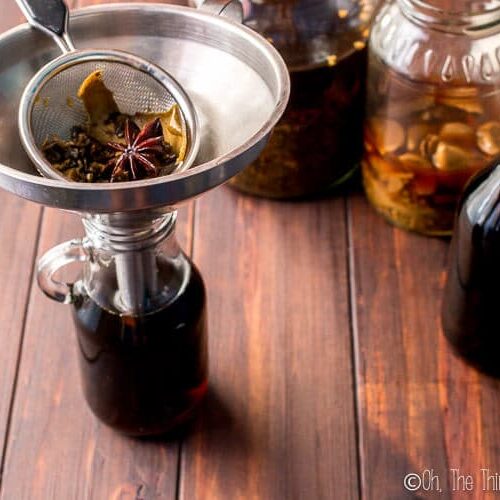
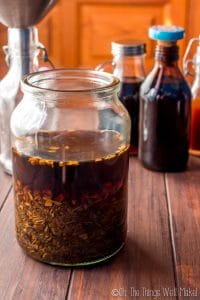
Comments
Post a Comment